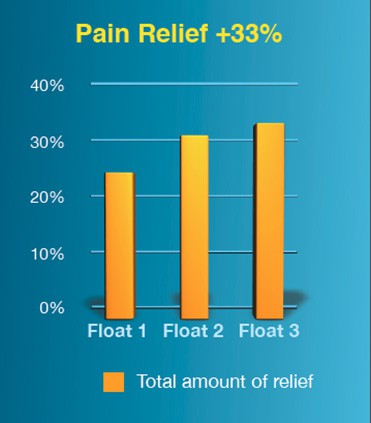Floatation Therapy Research Group
Floatation REST Therapy Results in Pain Relief and Relaxation for Fibromyalgia Patients
Dr. Roderick Borrie and Dr. Tamara Russell
About Fibromyalgia
Fibromyalgia is a syndrome characterized by chronic pain and soreness in muscles, tendons and other connective tissue. It affects millions of people worldwide, and it is treatable but not known to be curable.
Summary
Initial results from a recent international research study demonstrate that Floatation REST therapy can help sufferers of Fibromyalgia relax, manage pain and attend to tasks which normally cause them difficulty. Twenty-three volunteers completed a total of three one-hour floatation sessions, which were held five to seven days apart. Almost all of the volunteers were women aged 30 to 62.
The patients were asked to self report on a number of measures related to emotional and physical well-being. Directly before and after each session, patients used a ten point scale to indicate their levels of stress, pain, muscle tension, movement, energy, well-being, relaxation, sadness and anxiety. On average there were significant changes in all patient-reported levels, and in the direction expected, though the magnitude of these changes varied.



Across floatation sessions, decreases in muscle tension and pain were evident. For both variables, patients indicated a 25% reduction in the first session and a 33% reduction in the third session. Pain relief lasted an average of 2.5 days, and in the small sample (n=8) of patients who completed all trials and provided duration scores, the average progression was 1.9 days, 2.5 days and 3.2 days in order of floats. Statistical analysis revealed that during all floats the patientʼs level of relaxation increased 30% on average and levels of stress decreased 30%.

